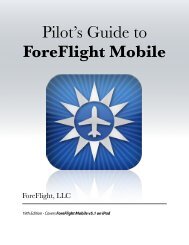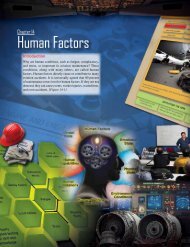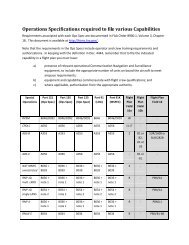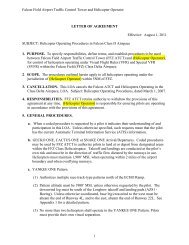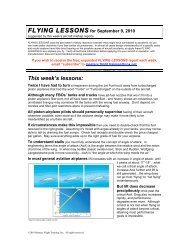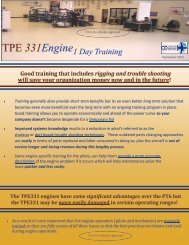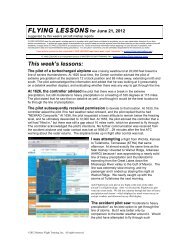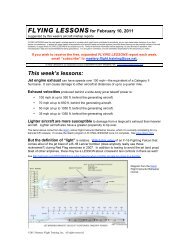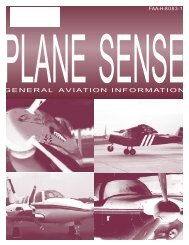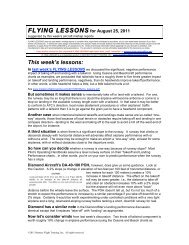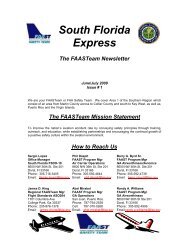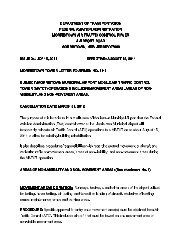Appendix 1, Runway Incursion Avoidance - FAA
Appendix 1, Runway Incursion Avoidance - FAA
Appendix 1, Runway Incursion Avoidance - FAA
- No tags were found...
You also want an ePaper? Increase the reach of your titles
YUMPU automatically turns print PDFs into web optimized ePapers that Google loves.
• Automatic Terminal Information Service (ATIS)• Notice to Airmen (NOTAMs)—http://www.faa.gov/pilots/flt_plan/notams• Advisory Circular (AC) 91-73, part 91 and part 135,Single-Pilot and Flight School Procedures During TaxiOperations• Aeronautical Information Manual (AIM)—www.faa.gov/air_traffic/publications/atpubs/aim/• AC 120-74, parts 91, 121, 125, and 135, Flight CrewProcedures During Taxi OperationsFigure 1-1. <strong>Runway</strong> incursions are a top <strong>FAA</strong> safety concern thatinvolves pilots, air traffic control (ATC), and ground operations.You are expected to taxi an airplane safely whether movingto or from a runway or otherwise moving about the airport.Scenarios such as bad weather, low visibility, construction,airport unfamiliarity, time of day, distractions, fatigue, andmiscommunications with air traffic control (ATC) add greatlyto the challenge of surface navigation.This chapter is designed to help you attain an understandingof the risks associated with surface navigation and is intendedto provide you with basic information regarding the safeoperation of aircraft at towered and nontowered airports. Thischapter focuses on the following major areas:• <strong>Runway</strong> incursion overview• Taxi route planning• Taxi procedures• Communications• Airport signs, markings and lightingEach section identifies best practices to help you avoid errorsthat may potentially lead to runway incursions. Although thechapter pertains mostly to surface movements for single-pilotoperations, all of the information is relevant for flight crewoperations as well.Additional information about surface operations is availablethrough the following sources:• Federal Aviation Administration (<strong>FAA</strong>) <strong>Runway</strong>Safety website—www.faa.gov/go/runwaysafety• <strong>FAA</strong> National Aeronautical Navigation Services(AeroNav), formerly known as the NationalAeronautical Charting Office (NACO)—www.faa.gov/air_traffic/flight_info/aeronav• Airport/Facility Directory (A/FD)—www.faa.gov/air_traffic/flight_info/aeronav/productcatalog/supplementalcharts/airportdirectory<strong>Runway</strong> <strong>Incursion</strong> OverviewApproximately three runway incursions occur each day attowered airports within the United States. The potentialthat these numbers present for a catastrophic accident isunacceptable. A runway incursion is formally defined bythe <strong>FAA</strong> as “any occurrence at an aerodrome involving theincorrect presence of an aircraft, vehicle, or person on theprotected area of a surface designated for the landing andtakeoff of aircraft.” The following are examples of pilotdeviations, operational incidents (OI), and vehicle (driver)deviations that may lead to runway incursions.Pilot Deviations:• Crossing a runway hold marking without clearancefrom ATC• Taking off without clearance• Landing without clearanceOperational Incidents (OI):• Clearing an aircraft onto a runway while anotheraircraft is landing on the same runway• Issuing a takeoff clearance while the runway isoccupied by another aircraft or vehicleVehicle (Driver) Deviations:• Crossing a runway hold marking without ATCclearanceAccording to <strong>FAA</strong> data, approximately 65 percent of allrunway incursions are caused by pilots. Additionally, 75percent of the 65 percent of runway incursions are causedby GA pilots.Causal Factors of <strong>Runway</strong> <strong>Incursion</strong>sDetailed investigations of runway incursions over the past10 years have identified three major areas contributing tothese events:• Failure to comply with ATC instructions1-2




